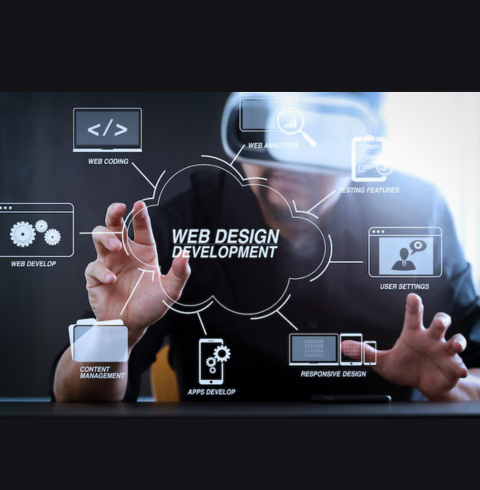Web Development (Static/Dynamic)
Future Static and Dynamic
Static and dynamic aspects will be used in future website creation, with dynamic features included for involvement and speed and static sites used for security. The dominant technologies will be Jamstack architecture and headless CMS, which allow developers to separate front-end presentation from content management. APIs and serverless features will improve scalability and customisation. Personalized user experiences will be driven by developments in AI and machine learning. In general, a smooth, effective, and extremely interactive user experience is what web development promises to deliver in the future.
The size of the worldwide static & dynamic market was estimated at USD 56000.0 million in 2021 and is projected to grow at a compound annual growth rate (CAGR) of 8.03% to reach USD 89013.17 million by 2029.
Importance of Static & Dynamic
To establish a strong online presence, taking a course on static and dynamic website construction is essential. It gives students the necessary abilities to build intricate, dynamic websites as well as straightforward, quickly loading static websites.Understanding these principles is Important for web developers in order to allow for a wide range of client requirements, improve user experience, and maximize site efficiency. Additionally, developers can adjust to different project requirements by learning both static and dynamic features, giving them a flexible and competitive edge in the labor market.
Why choose Static & Dynamic?
Selecting a course on static and dynamic website building gives you the necessary web development abilities. While dynamic websites provide real-time updates and interaction, static websites are quick, easy, and best suited for static material. Understanding all varieties guarantees flexibility in web design and development, Making possible you to adjust to a range of project specifications. Your employment is increased by your capacity to meet a wider range of client needs and industry demands, from simple e-commerce platforms to intelligent personal blogs, thanks to your extensive expertise.
Career Growth of Static & Dynamic
Professionals in static and dynamic website development should have a bright future. The essential abilities for entry-level web design employment are provided by mastering static development, with an emphasis on HTML, CSS, and basic JavaScript. Advanced options in full-stack development, e-commerce, and content management systems are provided by dynamic development, which involves server-side scripting languages like PHP, Python, and databases. The tech industry offers greater opportunities for increased pay and job progression, as firms rely more and more on having a strong online presence.At a compound annual growth rate (CAGR) of 44.9%, the global Web 3.0 market is expected to expand from USD 0.4 billion in 2023 to USD 5.5 billion by 2030.
Other Trainings
Introduction to Web Development
- A synopsis of web technology
- Simple terms used on the web
- Best practices and standards for the web
- Configuring the environment for development
- Knowledge of the client-server architecture
Static Website Development
- HTML: Composition & Elements
- CSS: Layout and style methods
- Basic JavaScript: DOM manipulation and interaction
- Frameworks and media queries for responsive design
- Using Git for version control
Dynamic Website Development
- Server-side scripting: Fundamentals of PHP and Python
- Integration of databases: SQL and NoSQL
- Use and production of APIs
- Verification and approval
- Overview of web frameworks
Advanced Dynamic Features
- Using AJAX for asynchronous tasks
- WebSockets for instant messaging
- Systems for managing content (CMS)
- Development of e-commerce
- Caching and performance optimization
Project and Deployment
- Working on a full-stack project
- Methods for testing and debugging
- FTP, SSH, and cloud platforms are some deployment strategies.
- Best practices for SEO
- Upkeep and modernization of web apps







